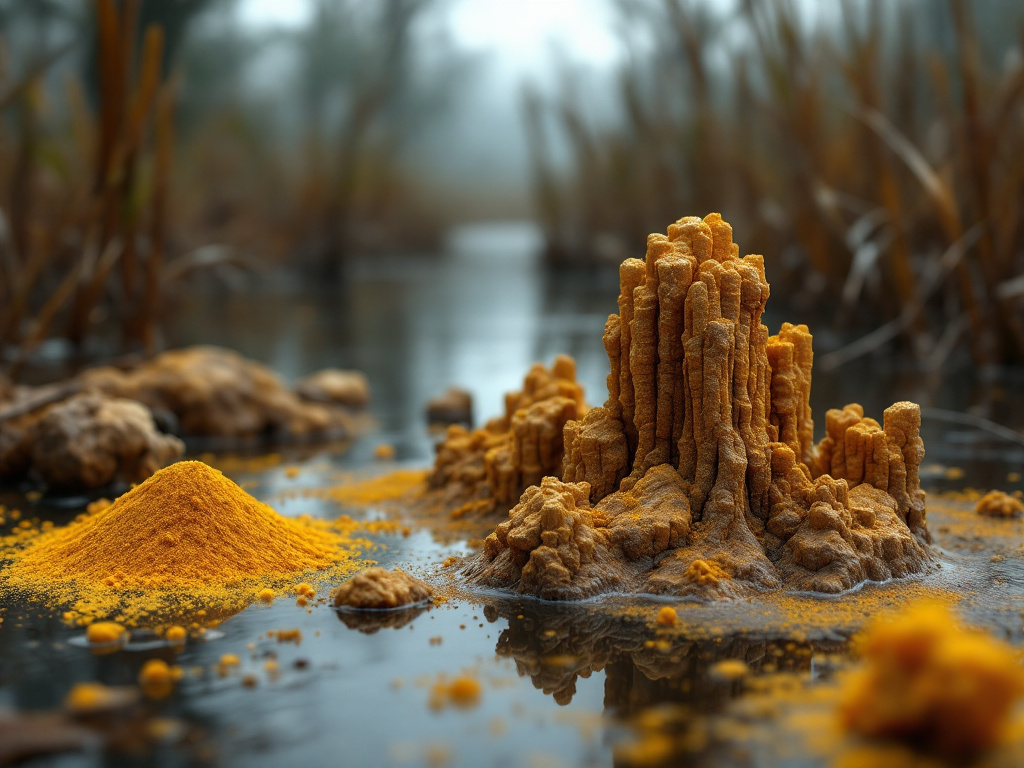🌍 Limonite (FeO(OH)·nH₂O), often dubbed “bog iron” or “lake iron,” is Earth’s natural rust—a hydrated iron oxide with a story etched in wetlands and ancient mines. From microbial magic in Scandinavian lakes to its role in historical metallurgy, limonite bridges geology and industry. Let’s dig in!
Limonite 101: Key Properties & Identification
FeO(OH) – The Science of Hydrated Iron
Limonite forms through weathering of iron-rich minerals, creating earthy masses or stalactites. Key attributes:
| Property | Details |
|---|---|
| Hardness | 4–5.5 on Mohs Scale |
| Density | 2.7–4.3 g/cm³ |
| Color | Yellow-brown to dark brown |
| Streak | Distinct brown-yellow |
Pro Tip: Crush a sample—limonite’s streak is always brown-yellow, unlike hematite’s red!
Formation & Global Sources

1. Bog Iron: Scandinavia’s Microbial Marvel
In Sweden and Finland, limonite forms at lake bottoms via microorganisms, earning names like “fer de marais” (marsh iron). These deposits regenerate naturally—a sustainable iron source for ancient blacksmiths!
2. Stalactites & Nodules
Southern Slovakia’s caves host striking limonite stalactites, while coarse nodules (called “iron hats” by German miners) cap iron ore veins.
3. Industrial Relevance
With only 48–63% iron, limonite is mined where abundant (e.g., Sweden’s Museraï marshes) or blended with richer ores.
Limonite vs. Hematite: Spot the Difference
- ✅ Streak Test: Limonite = brown-yellow; Hematite = red-brown.
- ✅ Texture: Limonite is earthy or powdery; hematite feels metallic.
- ✅ Formation: Limonite forms in wetlands; hematite in dry, oxygen-rich zones.
⚠️ Watch Out: Limonite’s surface can mimic hematite’s luster—always test!
Historical & Modern Uses
1. Ancient Applications
- Pigments: Ground for yellow-brown dyes.
- Tools: Forged into early iron implements.
2. Industrial Roles
- Ore Source: Processed for iron when high-grade ores are scarce.
- Soil Amendment: Adds iron to nutrient-deficient soils.
🔗 Rakuten Picks:
Caring for Limonite Specimens
- Storage: Keep dry to prevent crumbling or further oxidation.
- Handling: Avoid abrasives—its soft structure scratches easily.
FAQ: Limonite Demystified
Q: Is limonite radioactive?
A: No, but always test unknown specimens with a Geiger counter.
Q: Can limonite rust?
A: It’s already rust! Store away from water to preserve shape.
Q: Why is it called ‘bog iron’?
A: Forms in waterlogged environments via bacterial activity.
🔬 Authority links:

